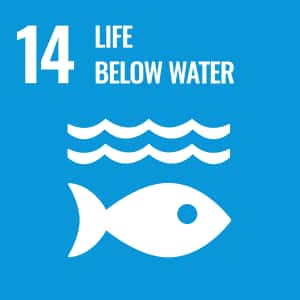2022/06/02
June 5th is World Environment Day as designated by the United Nations.
The ANA Group promotes ESG management that takes into consideration "Environment," "Social," and "Governance" with the aim of realizing a sustainable society and enhancing corporate value.
We have set medium- and long-term goals for environmental issues, and under the slogan "ANA Future Promise" launched in August 2021, we aim to achieve the SDGs by developing them into a unified initiatives as the ANA Group with the understanding and cooperation of our customers.
In this issue, we look back at each of these initiatives through FY2021.
Achieve net-zero CO₂ emissions from Aircraft Flight Operations by FY2050

ANA Group is promoting the four pillars of "Use of SAF (Sustainable Aviation Fuel)*", "Adopt new aircraft technologies", "Improve flight operations", and "Use of emission trading schemes" to achieve Net-Zero CO₂ emissions from aircraft operations by FY2050.
- * SAF stands for Sustainable aviation fuel, which reduces CO₂ emissions throughout its life cycle, from production and collection of raw materials such as vegetable oils and animal fats not from fossil fuels to combustion.
As one of the initiatives in the "use of SAF", In October 2021, ANA launched a new program, "SAF Flight Initiative: For the Next Generation," with the aim of contributing to CO₂ reduction for corporate customers who transport cargo and use ANA for employee business trips, thereby further promoting decarbonization and expansion of SAF use across industries.
The "use of SAF" is indispensable for reducing CO₂ emissions from aircraft operations, and stable supply of the required amount of SAF is a critical issue.
ANA established "ACT FOR SKY" on March 2nd, 2022 (SAF Day) in collaboration with
JGC HOLDINGS CORPORATION, REVO International Inc., and Japan Airlines Co., Ltd., in order to commercialize and expand the use of domestically produced SAF.
On the other hand, it is estimated that it will take time to mass-produce domestically produced SAF, and in order to secure a stable supply for the time being, we have secured enough volume from NESTE, headquartered in Finland, for use in regular flights, and we plan to secure additional supplies from LanzaTech, Inc. in the U.S.
In terms of "Improve flight operations", we are working to reduce environmental impact by implementing initiatives tailored to each stage of operations, such as washing engines with water, reducing the total weight of aircraft (e.g., by reducing the weight of in-flight service carts), and reducing the time spent on the ground by having aircraft depart from some parking areas without push-back.
Reduce resource waste rate to zero by FY2050

Various initiatives have been promoted to reduce the waste rate of disposable plastic products and paper to zero by FY2050.
By changing the meal trays for in-flight meals in economy class on international flights to "plant-based material", we have reduced approximately 317 tons of disposable plastic. We have also reduced waste by introducing wooden cutlery and paper straws for in-flight use and discontinuing the use of plastic bags for checked baggage.

Paper waste was reduced by digitizing and pamphletizing the in-flight magazine "Tsubasa no Okoku" and eliminating timetables.
Reduce food waste rate by 50% by FY2050

The "50% reduction of food waste rate by FY2050" means that we aim to reduce the food waste rate to less than 2.3% (in monetary terms), which is half of the 4.6% food waste rate in FY 2019. To achieve this goal, we have been checking the number of reservations for in-flight meals until just before departure time without affecting on-time flight operations, and have been working to load the meals on each flight with as little waste as possible.
In addition, as an effort to reduce food loss, we are utilizing food residues from cooking.

The factory of ANA Catering Service Co., Ltd., which produces in-flight meals for ANA, generates approximately 248 tons of residue from cooking (equivalent to one 25-meter pool) and approximately 28 tons of oil (equivalent to 14,000 2-liter PET bottles)* a year. Since 2008, these food residues have been 100% recycled into compost and feed. As part of our "recycling" initiatives to make effective use of compost, kales grown using compost derived from cooking residues generated at our Narita factory have been available in salads served in economy class on some international flights from March 1st, 2022.
- * Results for fiscal 2019
Details of each initiatives are available in the "ANA Future Promise Initiatives".
The ANA Group will continue to strive to realize a sustainable society and enhance corporate value with the understanding and cooperation of our customers.

SDGs No.7 AFFORDABLE AND CLEAN ENERGY

SDGs No.12 RESPONSIBLE CONSUMPTION AND PRODUCTION

SDGs No.13 CLIMATE ACTION

SDGs No.14 LIFE BELOW WATER

SDGs No.15 LIFE ON LAND



